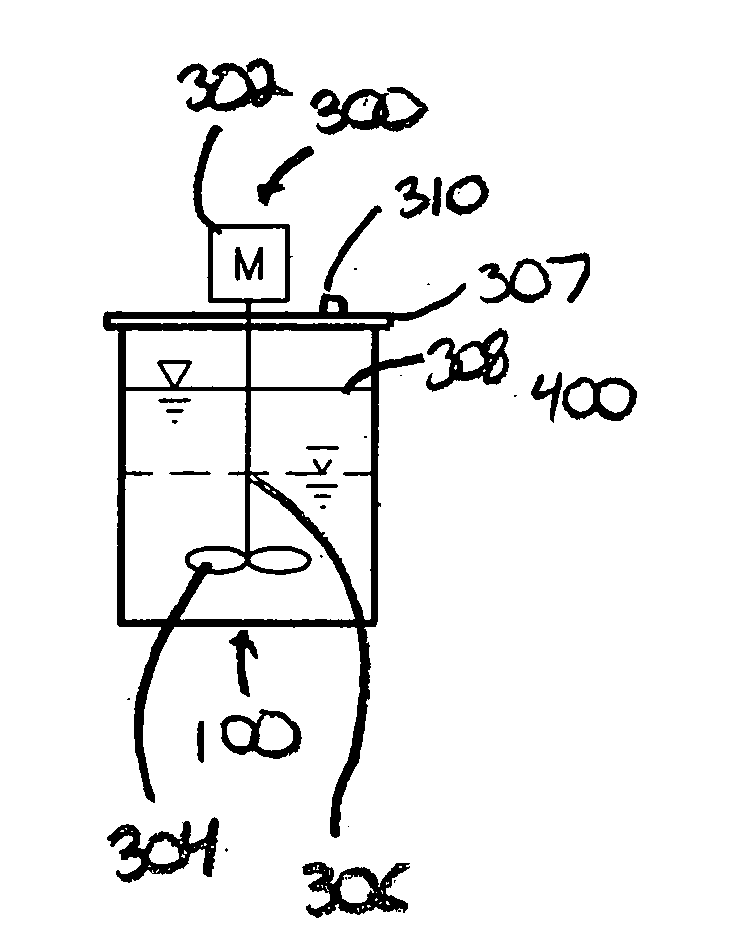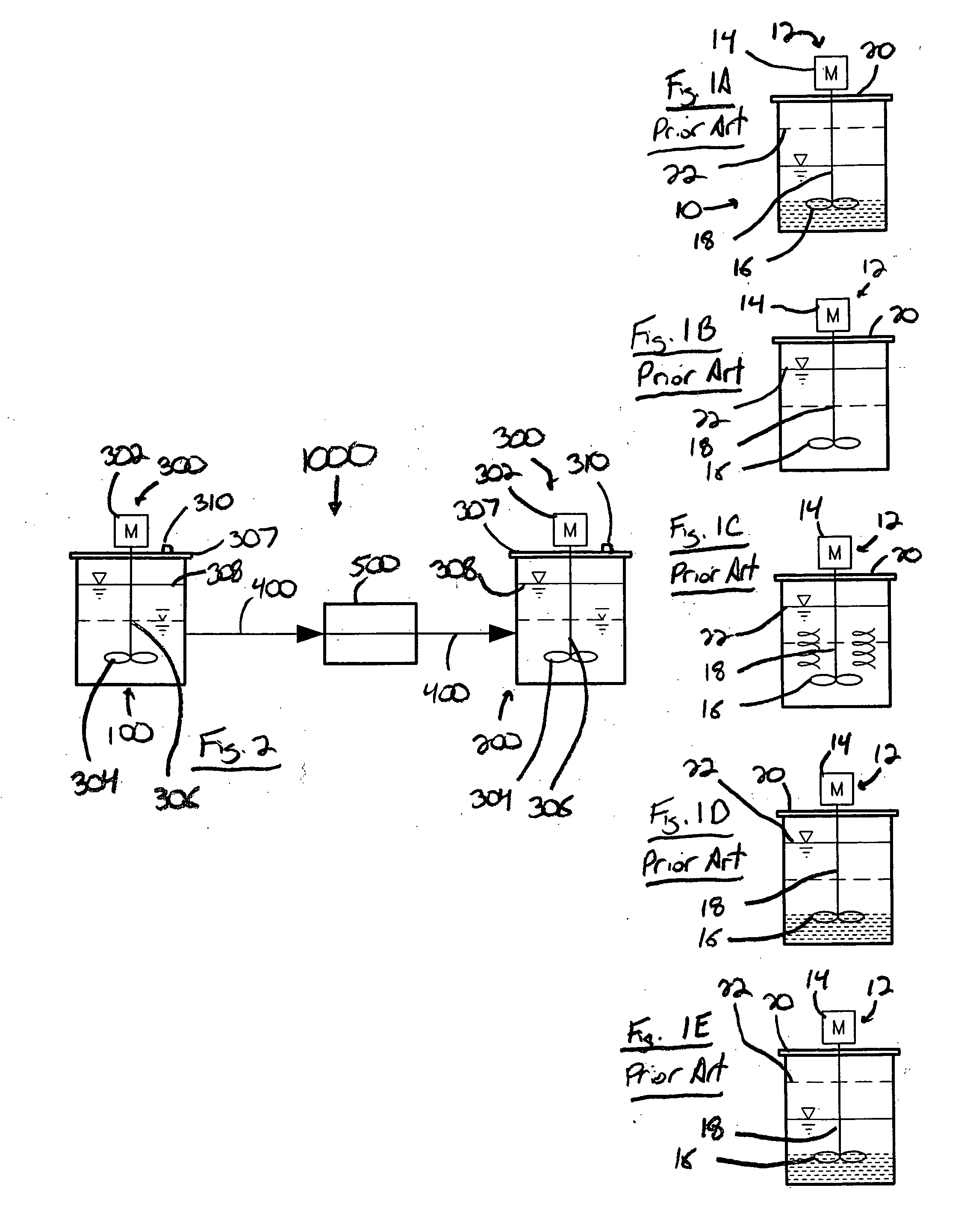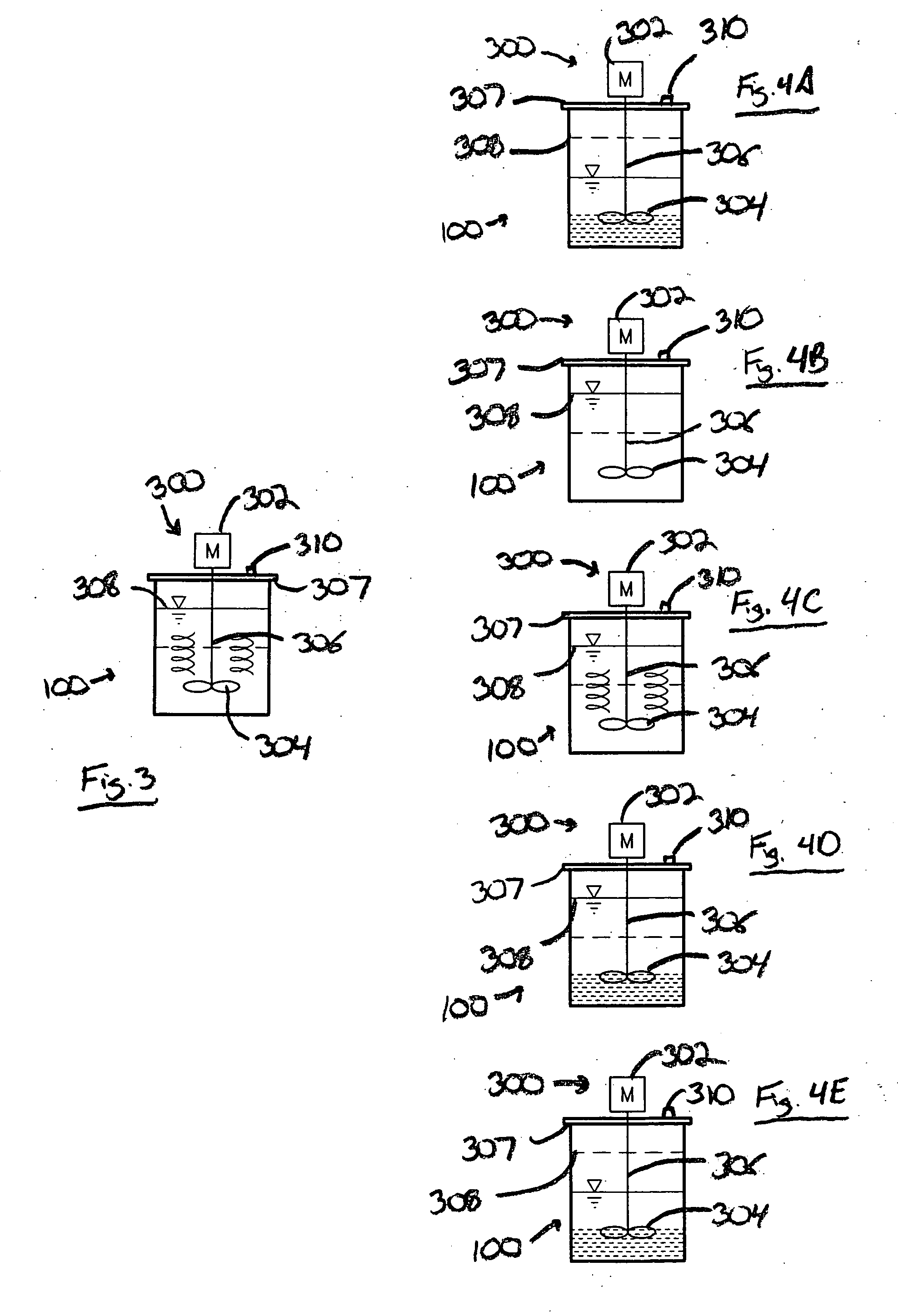Two phase anaerobic contact sequencing batch reactor (ACSBR) system for treating wastewater containing simple and complex organic constituents
a batch reactor and anaerobic contact technology, applied in the field of wastewater treatment, to achieve the effect of high efficiency
- Summary
- Abstract
- Description
- Claims
- Application Information
AI Technical Summary
Benefits of technology
Problems solved by technology
Method used
Image
Examples
Embodiment Construction
[0040] With reference now to the drawing figures in which like reference numerals designate like parts throughout the disclosure, to overcome the deficiencies of this prior art wastewater treatment method discussed previously, a treatment system constructed according to the present invention is indicated generally at 1000 in FIG. 2. The system 1000 utilizes a first reactor 100, and a second reactor 200 in conjunction with one another to perform the wastewater treatment in the system 1000. However, it is also contemplated that the system 1000 can be formed with only one reactor 100 or 200. Each of the reactors 100 and 200 is formed as an anaerobic contact sequencing batch reactor (ACSBR) and includes a mixing or agitating mechanism 300. In a preferred embodiment, each mechanism 300 includes an adjustable speed motor 302 disposed outside of the reactor 100 or 200, that is operably connected to an impeller 304 located within the reactor 100 or 200 by a rotating shaft 306 that extends f...
PUM
| Property | Measurement | Unit |
|---|---|---|
| hydraulic retention time | aaaaa | aaaaa |
| temperature | aaaaa | aaaaa |
| thermophilic temperature | aaaaa | aaaaa |
Abstract
Description
Claims
Application Information
 Login to View More
Login to View More - R&D
- Intellectual Property
- Life Sciences
- Materials
- Tech Scout
- Unparalleled Data Quality
- Higher Quality Content
- 60% Fewer Hallucinations
Browse by: Latest US Patents, China's latest patents, Technical Efficacy Thesaurus, Application Domain, Technology Topic, Popular Technical Reports.
© 2025 PatSnap. All rights reserved.Legal|Privacy policy|Modern Slavery Act Transparency Statement|Sitemap|About US| Contact US: help@patsnap.com



